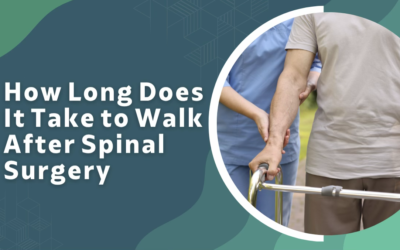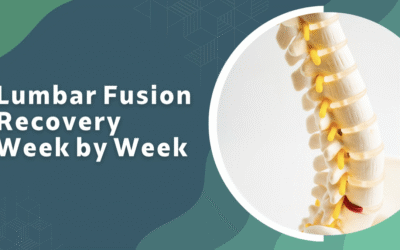Trigeminal Neuralgia Treatment in Mumbai
There are 12 pairs of cranial nerves in the head. The trigeminal nerves, which allow a person to feel facial feelings, are among these. Trigeminal neuralgia is a facial pain issue caused by a problem with any three nerve branches: the ophthalmic branch, mandibular branch, or maxillary branch.
 Trigeminal neuralgia is a condition that affects the facial nerves and produces constant, excruciating pain from the brow to the jaw. It has a comparable sensation to that of an electric shock.
Trigeminal neuralgia is a condition that affects the facial nerves and produces constant, excruciating pain from the brow to the jaw. It has a comparable sensation to that of an electric shock.
The pain may be on one side or both. Brushing your teeth, eating, or being exposed to the wind can all cause pain. Trigeminal neuralgia might start moderate and short, but if left untreated, it can worsen over time.
Dr. Gurneet Singh Sawhney offers advanced medical and surgical trigeminal neuralgia treatment in Mumbai. He is one of the few neurosurgeons in Mumbai skilled in various surgeries required in treating trigeminal neuralgia.
Overview of Trigeminal Neuralgia
Trigeminal neuralgia is a type of facial discomfort caused by inflammation of the trigeminal nerve. It causes excruciating facial nerve pain in single episodes or every few hours, minutes, or seconds. It can take months or years between episodes. Still, some patients with uncontrolled pain can lead to chronic pain syndrome, interfering with everyday activities and causing depression.
Trigeminal neuralgia is more common in those over the age of 60, while it can affect people of any age. It occurs five times more frequently on the right side of the face than on the left.
Causes of Trigeminal Neuralgia
The most common cause of trigeminal neuralgia is idiopathic, which means the cause is unknown.
- The nerve can sometimes be pinched due to adjacent blood arteries, aneurysms, or tumors.
- Systemic disorders such as multiple sclerosis, sarcoidosis, and Lyme disease can produce inflammatory causes of trigeminal neuralgia.
- Scleroderma and systemic lupus erythematosus are two collagen vascular diseases with which there is a link.
Symptoms of Trigeminal Neuralgia
Trigeminal neuralgia pain is sometimes mistaken for a tooth condition. The most common symptom is short bursts of shooting pain.
- Pain triggered by brushing, cleaning the face, shaving, or applying cosmetics is another typical indication and symptom. A mild breeze might also trigger the pain.
- Pain can occur for a short time.
- Pain occurs multiple times per week or per day.
- The pain affects the cheeks, teeth, gums, jaw, and lips the most.
Treatment for Trigeminal Neuralgia
- Dr. Gurneet Sawhney may check the patient’s face to discover the affected areas if their symptoms indicate trigeminal neuralgia.
- An MRI scan can rule out other illnesses that cause similar symptoms, such as tooth decay, tumors, or sinusitis.
- Medications are usually used to treat trigeminal neuralgia. Medications like carbamazepine or oxcarbazepine may be used as a first-line treatment.
- Baclofen, levetiracetam, lamotrigine, gabapentin, pregabalin, and botulinum injections are among the various drugs employed. Both the efficacy and tolerance of the medications differ.
- Dr. Gurneet Sawhney, one of the best neurosurgeon in India, may recommend highly specialized surgical treatment if medication is no longer meeting the patient’s demands. Dr. Sawhney offers advanced trigeminal neuralgia surgery in Mumbai, including:
1 . Microvascular Decompression (MVD):
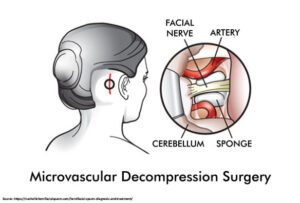
Decompression may help to lessen sensitivity and restore normal function to the trigeminal nerve. MVD surgery is a more invasive surgery that involves a behind-the-ear incision.
Once the patient is anesthetized with an intravenous injection (no breathing tube is required), the neurosurgeon may slide a 3-inch-long pencil lead diameter probe through the cheek until it reaches the trigeminal nerve fibres.
Those fibres are addressed by numbing the pain-inducing area of the face. The microvascular decompression surgery for trigeminal neuralgia takes about 45 minutes and is performed as an outpatient procedure.
2. Stereotactic radiosurgery:
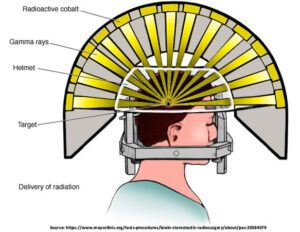
The stereotactic radiosurgery for trigeminal neuralgia is very similar to having an MRI. It makes a few gentle noises, carries the patient about for a while, and then it’s done. The treatment takes roughly an hour on average. The therapy equipment concentrates a substantial amount of radiation on the trigeminal nerve during this period.
Fatigue, abnormal blood counts, hair loss, and nausea, commonly associated with radiation, are uncommon. The patient usually returns home for lunch when the box (frame) has been removed. In general, the patients can do everything they did the day before therapy the day after.
 Recovery After Trigeminal Neuralgia Treatment
Recovery After Trigeminal Neuralgia Treatment
To sustain their treatment, patients should visit their trigeminal neuralgia treatment specialist in Mumbai frequently. Following up with a doctor ensures that the treatment is correct and effective.
Patients who have neurostimulation surgery may also meet with a device representative, who will work with their doctors to alter the device settings and parameters as needed.
Why Should You Choose Dr. Gurneet Sawhney for Trigeminal Neuralgia Treatment in Mumbai?
Dr. Gurneet Sawhney provides patient‐centric trigeminal neuralgia treatment in Mumbai. He works relentlessly to achieve the best results possible, ultimately improving his patients’ quality of life.
In addition, he provides advanced and tailored trigeminal neuralgia surgery in Mumbai.
Besides, Dr. Sawhney, a leading trigeminal neuralgia specialist in Mumbai, has a wealth of experience, skills, and dedication to giving the finest possible trigeminal neuralgia treatment.
He also provides integrated care to help patients overcome trigeminal neuralgia by combining innovative and result-oriented trigeminal neuralgia treatment in Mumbai.
Frequently Asked Questions
How long does a trigeminal neuralgia episode last?
Is it possible for trigeminal neuralgia to induce a stroke?
Is it possible to live a regular life while suffering from trigeminal neuralgia?
Is trigeminal neuralgia a life-threatening condition?
Can trigeminal neuralgia go away permanently?
Blogs
What Are the 5 Warning Signs of a Mini-Stroke?
A mini stroke, medically called a transient ischemic attack, is the body's early alert that a major stroke may be developing soon. A brief blockage in the brain stops oxygen flow for minutes. Even though symptoms fade quickly, the impact on health is serious. These...
How Long Does It Take to Walk After Spinal Surgery?
Spinal surgery, whether for a herniated disc, spinal stenosis, or degenerative disc disease, can be life-changing. However, recovery can be challenging, and one common question patients ask is, “How long does it take to walk after spinal surgery?” Walking is an...
Lumbar Fusion Recovery Week by Week: A Complete Guide
Lumbar fusion surgery is often recommended to treat serious spine issues like degenerative disc disease, scoliosis, or severe herniated discs. The procedure involves fusing two or more vertebrae together to eliminate motion in the spine and relieve pain. Though lumbar...

 Trigeminal neuralgia pain is sometimes mistaken for a tooth condition. The most common
Trigeminal neuralgia pain is sometimes mistaken for a tooth condition. The most common 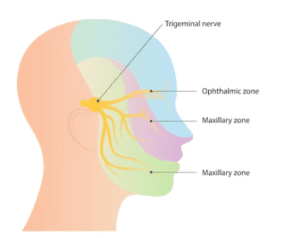
 Recovery After Trigeminal Neuralgia Treatment
Recovery After Trigeminal Neuralgia Treatment
